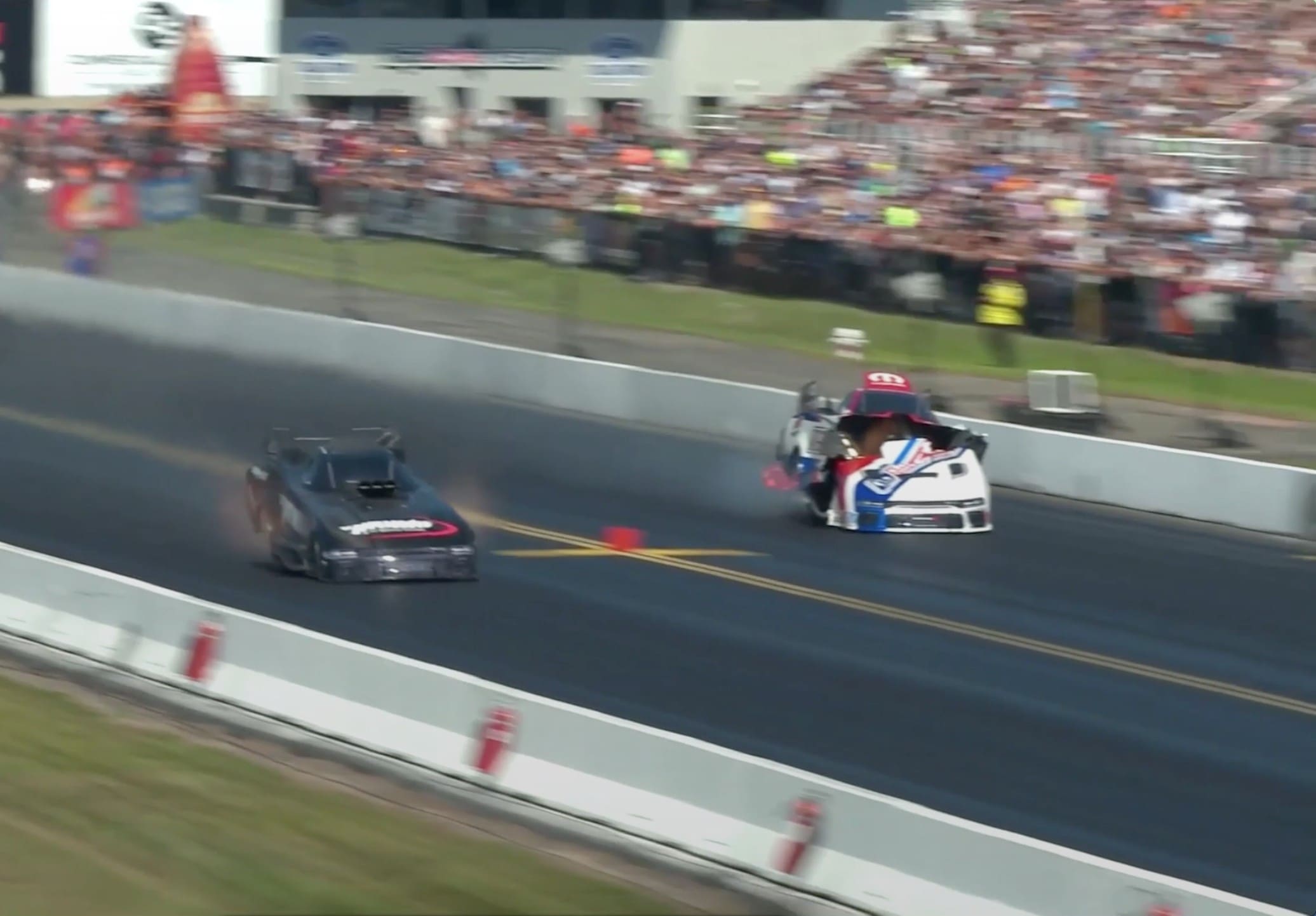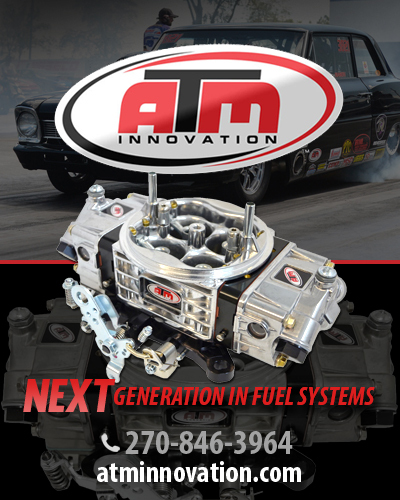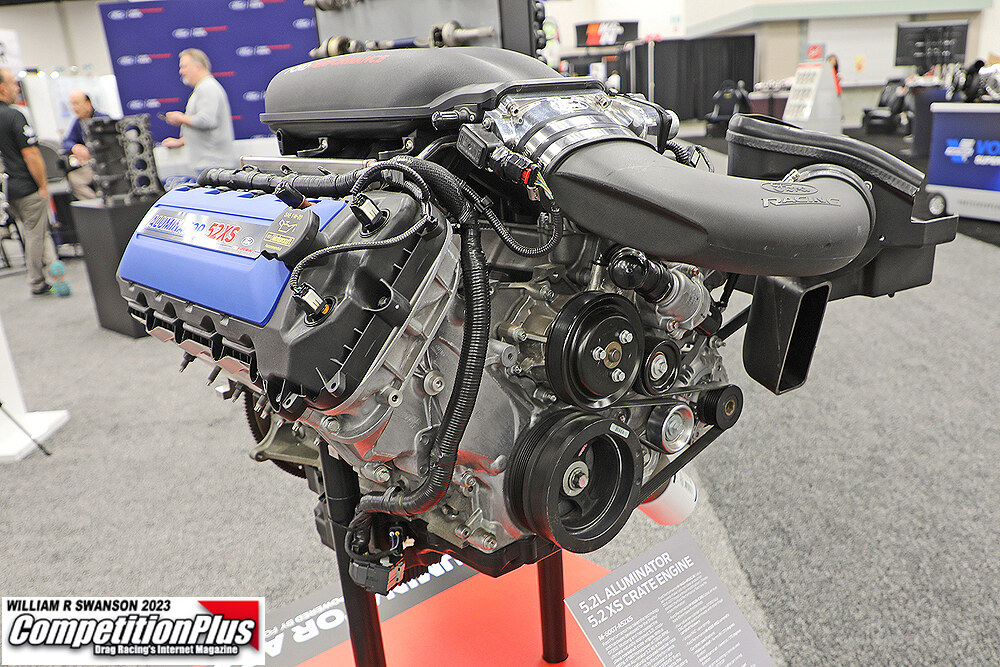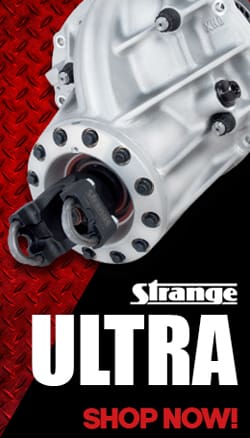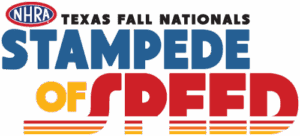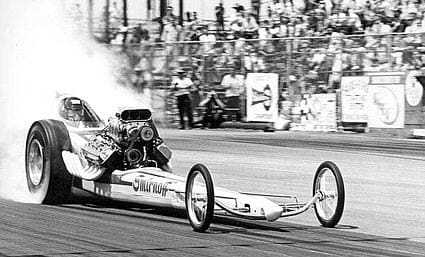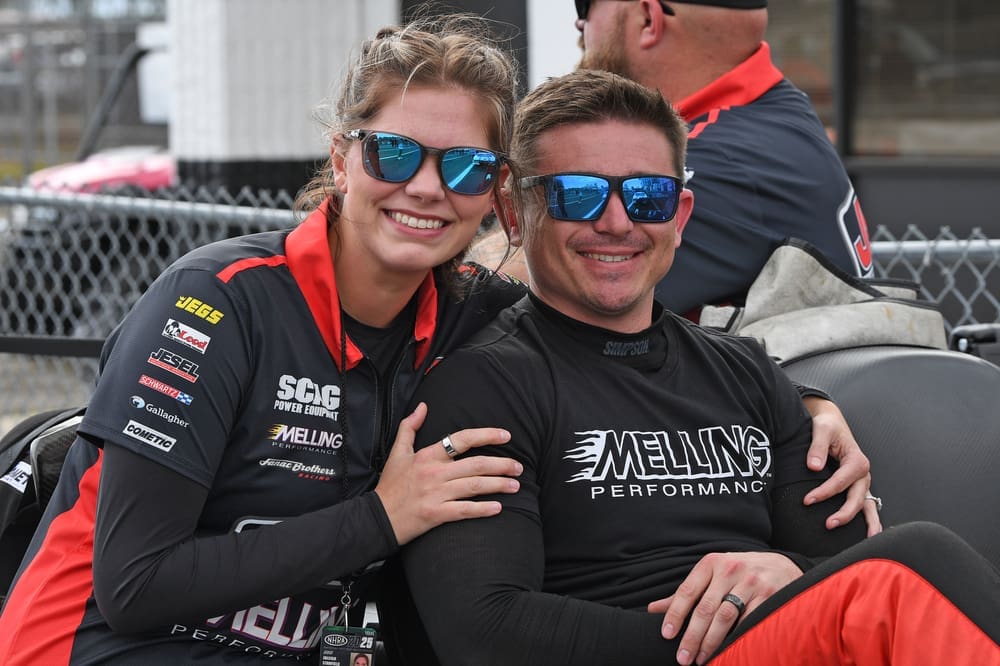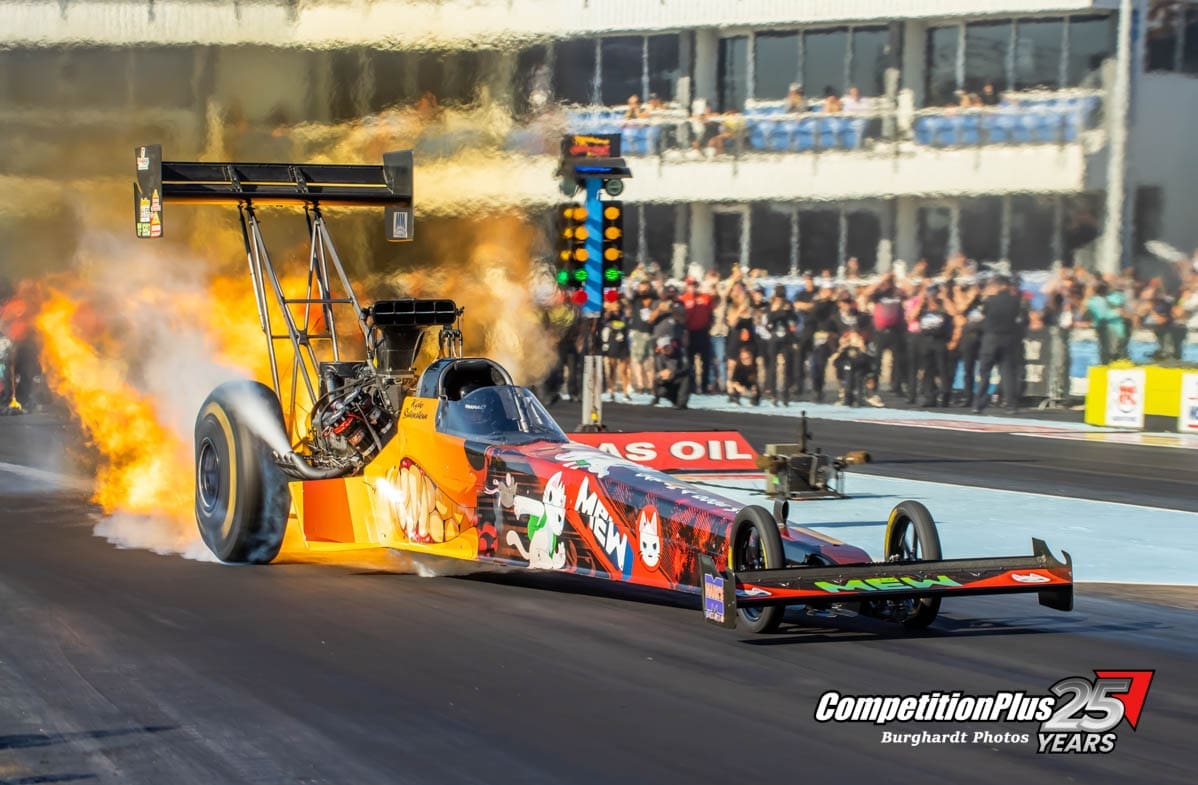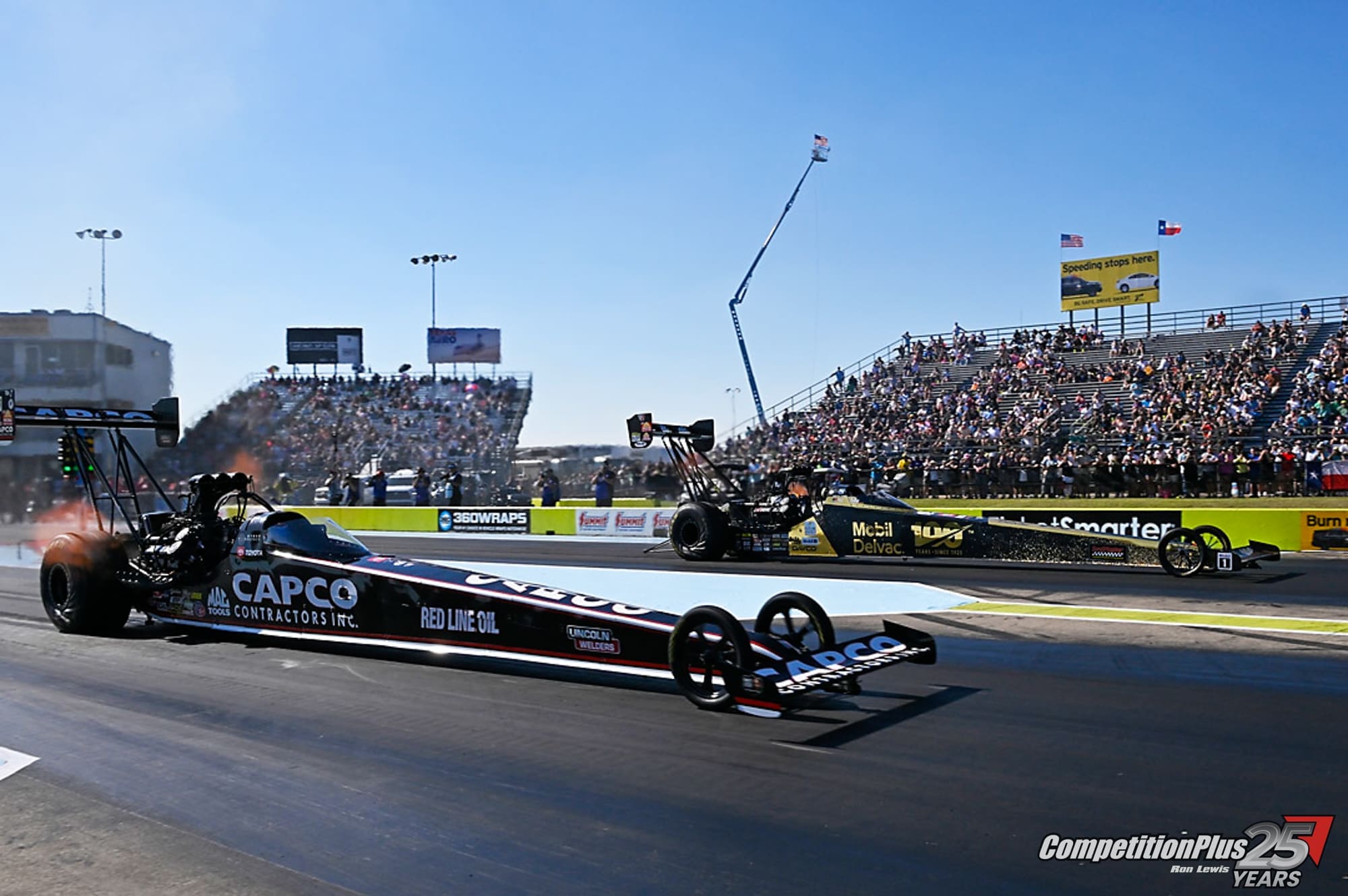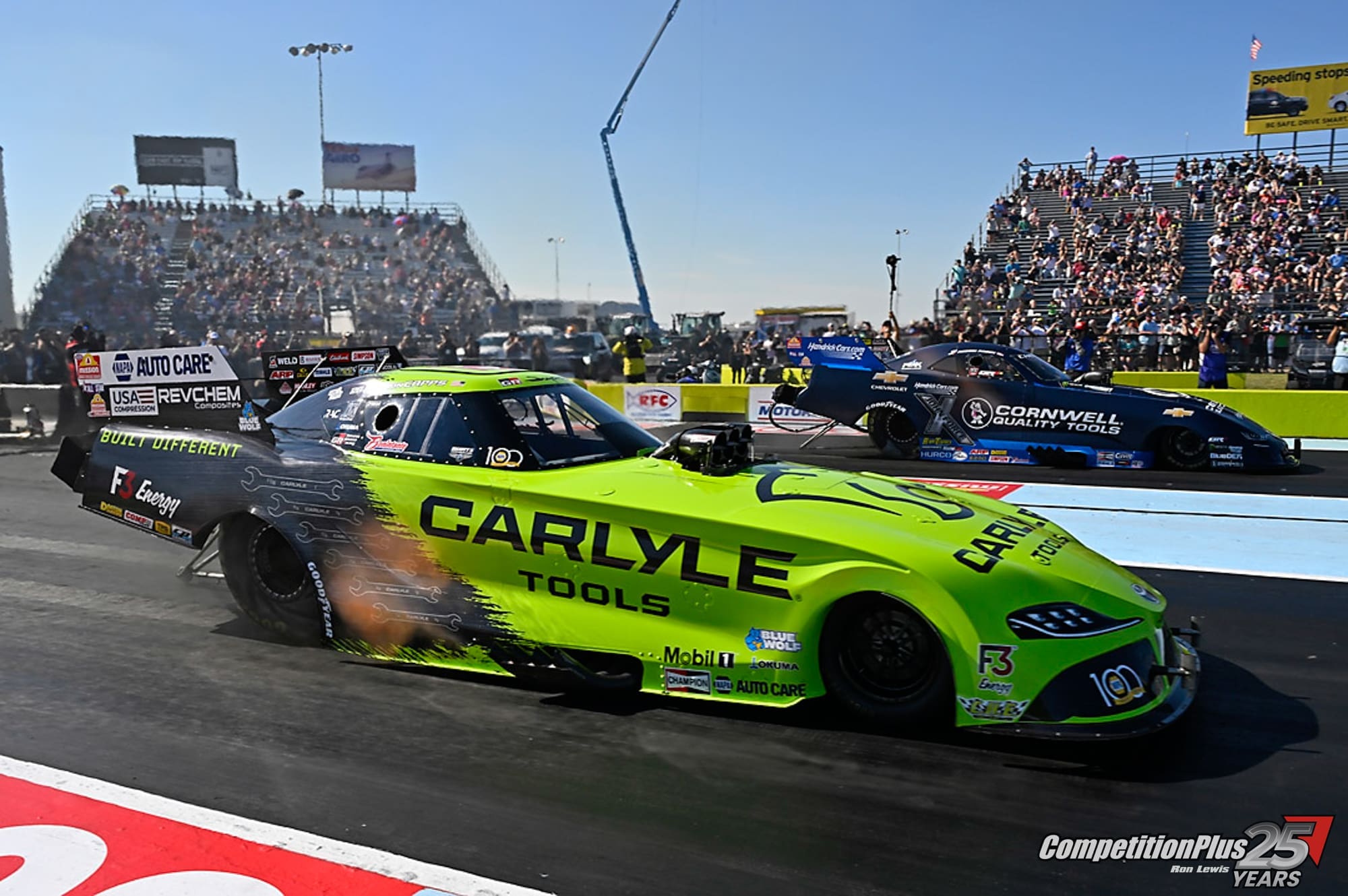Matt Hagan climbed out of his Dodge Funny Car at Maple Grove Raceway on Sunday with anger directed at one sticking point: the NHRA’s tethering system. The rule, he said, is creating dangers far worse than the problem it was designed to solve.
Hagan’s comments followed his third body-destroying engine explosion in two races, one of them in a test session. Each time, he said, his view was completely obstructed by the car’s tethered body, leaving him blind at high speed.
“This NHRA tether rule is ridiculous,” Hagan said. “It’s going to get a driver killed. I couldn’t see where I was at. I couldn’t see where the other driver’s at, couldn’t see anything. You’re just along for the ride. It’s like, what are we doing this? I’m a four-time world champion and I probably should walk away from the sport because of stupid stuff like that. We got guys making rules that have no idea how to drive one of these things. I get it, there’s no great answers, but this ain’t it.”
The tethering system has essentially split the bodies in half as designed. The problem is that the back-half, on multiple occasions, has remained attached to the car and obstructed the driver’s vision. In one case, it struck Buddy Hull’s hand and caused an injury.
The debate has been ongoing since the NHRA mandated tethers for Funny Car bodies in 2013 after a Robert Hight body shell landed in the grandstands. But frustration has intensified since John Force’s crash at Virginia Motorsports Park in 2024, where an engine explosion left him unable to steer and ultimately forced him into the wall. That incident has essentially ended his full-time driving career.
Hagan said he felt the tether rule played a role in that crash. “I felt like this cost John his career,” Hagan said. “It would’ve been nice to be able to see John step away at John’s own wishes, not because he had an accident and these things caused him to hit the wall and couldn’t see and couldn’t get out of the car and everything else.”
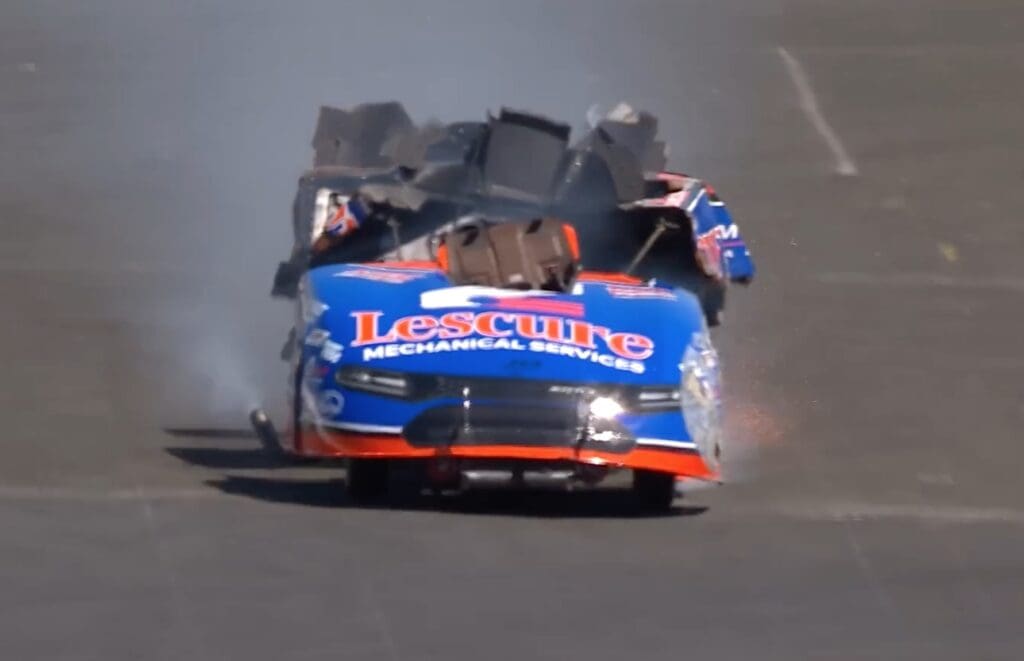
He recalled past examples of trouble as well. Veteran Johnny Gray was once trapped inside a Funny Car after the tethering left him with only one escape route. Hagan said what once worked — bodies leaving the chassis in an explosion and pulling out the parachutes — has been undermined by the tether rule.
“What used to be nice was that the body would come off and drag the chutes out no matter what,” Hagan said. “Now that the bodies are staying on there, these bodies are kind of coming back down and then it’s on top of the wheels and then it takes your steerability away.”
Asked if he believes NHRA has handled the situation as best they could, Hagan said the sanctioning body seems unsure how to proceed.
“I just feel like our safety has not been priority with it,” he said. “Obviously we do want to protect their fans. And I understand that comes priority, but there comes a point in time where you go like, ‘Hey man, we’ve already had a handful of drivers hurt here from these tethers, and we have to do something different. This is not the answer.’”
Hagan said he has yet to hear of a fan ever being injured by a Funny Car body, but he can cite several drivers hurt since tethering began. “I was asking an NHRA tech today about that, and they couldn’t confirm a single fan being hurt from the bodies,” Hagan said. “But I can already give you a handful of drivers that have been hurt from tethering these bodies down, and that’s just not good. We’re putting our drivers at serious risk.”
Rather than only criticize, Hagan has tried to offer solutions. He has worked with Dodge engineers and crew chiefs Dickie Venables, Rahn Tobler, and Guido Antonelli on alternatives. One concept involves a spring-loaded front hinge that would allow the body to lift slightly and vent pressure before tethering forces it back down.
“Guido took charge of trying to come up with a new solution,” Hagan said. “I think he has a really viable solution. It’s just a matter of getting NHRA to allow it.”
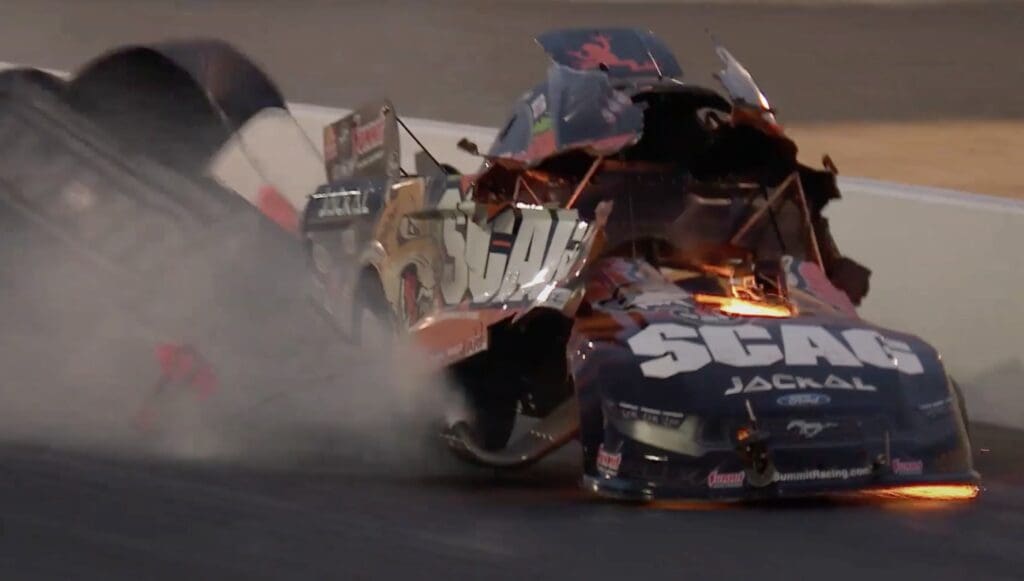
RELATED STORY – FUNNY CAR TETHERING SYSTEM UNDER SCRUTINY AFTER SONOMA EXPLOSIONS
A pair of violent engine explosions during Funny Car qualifying at the NHRA Sonoma Nationals has reignited a safety debate surrounding the tethering systems designed to keep carbon-fiber bodies from launching into the grandstands.
But after two drivers were left blinded by debris and trapped in flames, many within the pits say the current system may be protecting fans at the expense of the drivers.
Tim Wilkerson, a veteran Funny Car racer now serving as crew chief for his son Daniel’s SCAG-backed Mustang, didn’t mince words after watching Daniel pilot his car to a stop while unable to see out of the cockpit.
“We all know that we can’t put bodies in the stands, but I just think we’ve proved to ourselves in the last five years that we need to find a different way to do it,” Wilkerson said. “In my opinion, we hurt our Dale Earnhardt — John Force. We hurt the king of our sport because of the tethers. But is there a better way to do it? I think we just need to start looking because we can’t keep doing what we’re doing.”
The explosion that consumed Daniel Wilkerson’s car Friday night split the Funny Car body in half. Though he escaped injury, the back half of the body remained tethered to the chassis, obstructing his vision. His father said that problem isn’t new — and it isn’t going away.
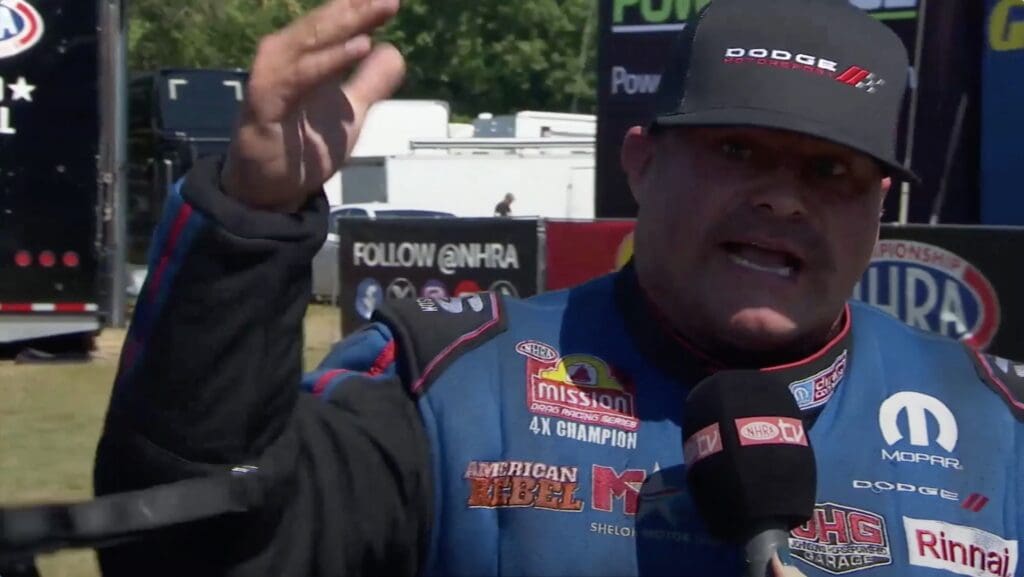
Tim Wilkerson, whose son Daniel now drives, has also pressed the issue. Wilkerson said he has tried burst panels and other relief systems, and with chassis builder Murf McKinney, is exploring retractable tether options. But he said NHRA has been slow to approve anything. “They act like they’re not going to let us do anything until next year, and then still it’s, ‘Well, we have to prove it,’” Wilkerson said.
The issue shows no sign of disappearing. Hagan’s forceful comments after Reading are the strongest yet from a current championship contender. Wilkerson continues to lobby behind the scenes. Both men insist NHRA must act before a driver is seriously injured — or worse.
Hagan put the situation in simple terms.
“The way it is now is we are essentially lighting a firecracker in our hand, and closing it, when we should be lighting one in an open hand,” Hagan said. “With an open hand, the firecracker pops and yes it hurts some. But try closing your hand and see what it does. We [as drivers] are those fingers. Eventually we are going to lose some of those fingers.”





